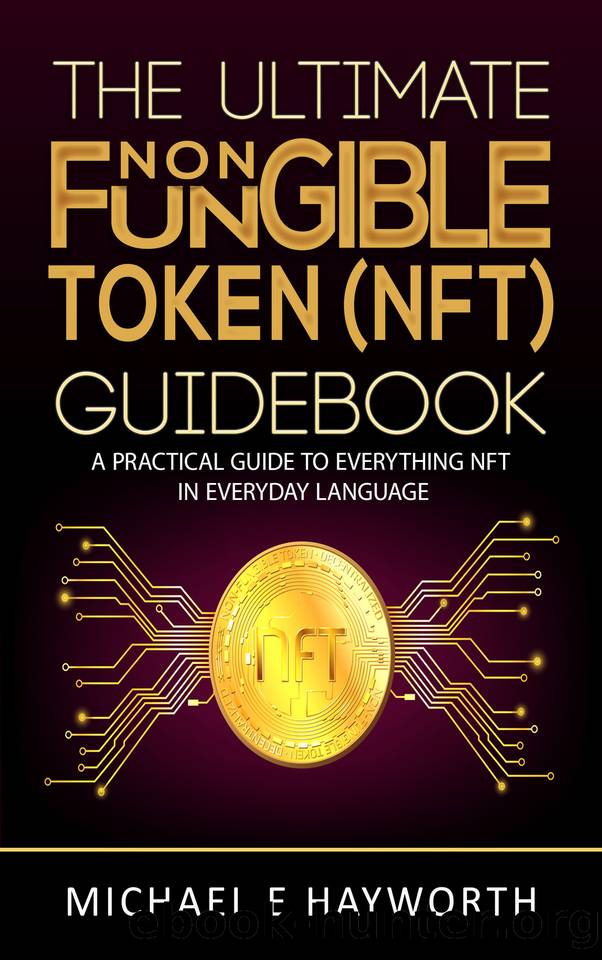The Ultimate Non Fungible Token (NFT) Guidebook: A Practical Guide to Everything NFT in Everyday Language by Hayworth Michael E

Author:Hayworth, Michael E [Hayworth, Michael E]
Language: eng
Format: epub
Published: 2021-03-12T16:00:00+00:00
Clearly, buyers are very excited about the potential of non-fungible tokens (NFTs).
This month alone, Nyan Catâs creator nabbed almost $600,000 in ETH, a single Hashmask sold for $650,000, rare CryptoPunks are going for over $1 million and a chunk of âlandâ in the game Axie Infinity fetched 888 ETH.
But those buyers should consider a very important question: What will happen to their NFT when the company or artist that created it closes up shop?
That question may be somewhat ahead of the curve for an industry growing this fast. For one data point, Devin Finzer, CEO of NFT marketplace OpenSea, told CoinDesk in a phone call that the company has âhad some pretty insane growth,â going from $1 million in volume as of August to $8 million in January and $50 million already in February.
An NFT is a completely unique blockchain token. This is distinct from other tokens, which are fungible. One of Augurâs REP tokens is as good as any other, but each CryptoKitties collectible is its own cat, and provably so.
As this particular blockchain use-case clicks in the minds of buyers, itâs important that they get more sophisticated about considering how safe and secure their asset is â its persistence.
Persistence is more an issue for those buying art or collectibles than it is for people buying, for example, in-game items (such as weapons or land).
Furthermore, NFTs can do a lot of things besides track content ownership. NFTs can make shipping invoices into loan collateral or manage smart- contract risk.
But the key use-case right now is for owning cool stuff minted online, usually with an image or GIF, but sometimes with sound, video or text attached to a completely unique token on Ethereum or, in the case of the surging NBA Top Shot, on Flow.
So when users buy that cool-digital-thing, whether a sliver of basketball video or brilliant piece of artwork, do they know how the cool-digital-thing is hosted and can they verify it will continue to exist over time?
âWhen you talk about blockchain and decentralization thatâs not something thatâs on consumersâ minds. But LeBron James, they understand that,â David Pakman, a partner at the venture firm Venrock, told CoinDesk in a phone call. If an NFT buyer spends enough on an NFT to make their wallet groan, though, they might want to think about the blockchain bits after all.
How does this all work?
On the simplest level, an NFT is a record (a document with a hash) stored on Ethereum (usually) that points to where its associated content (the image) lives somewhere else on the internet (itâs much too expensive to store images on Ethereum).
âYou can go to the contract and you can actually query the contract for whatâs called a TokenURI,â OpenSeaâs Finzer told CoinDesk.
The people who made the ERC-721 standard explicitly decided not to weigh in on where a creator puts the data and how reliable that storage site is.
âWho is the authority and who owns what and can we prove that?â William Entriken told CoinDesk. âThis is a little bit outside of the scope of the standard.
Download
This site does not store any files on its server. We only index and link to content provided by other sites. Please contact the content providers to delete copyright contents if any and email us, we'll remove relevant links or contents immediately.
2021 Beginners Guide to Python Programming Language: A Crash Course to Mastering Python in One Hour by Elmer Gary & Elmer Gary(1832)
API Testing and Development with Postman by Dave Westerveld(1621)
Learning C# by Developing Games with Unity 2020 by Harrison Ferrone(1541)
Machine Learning for Algorithmic Trading by Stefan Jansen(1480)
Software Architecture for Busy Developers by Stéphane Eyskens(1475)
Hands-On ROS for Robotics Programming by Bernardo Ronquillo Japón(1453)
Delphi GUI Programming with FireMonkey by Andrea Magni(1312)
Cloud Native with Kubernetes by Alexander Raul(1283)
Game Development Projects with Unreal Engine by Hammad Fozi & Goncalo Marques & David Pereira & Devin Sherry(1267)
Automate It with Zapier by Kelly Goss(1234)
Software Architecture Patterns for Serverless Systems by John Gilbert(1228)
Practical System Programming for Rust Developers by Prabhu Eshwarla(1206)
Datadog Cloud Monitoring Quick Start Guide by Thomas Kurian Theakanath(1206)
Practical Node-RED Programming by Taiji Hagino(1194)
Mastering React Test-Driven Development by Daniel Irvine(1177)
Delphi Programming Projects by William Duarte(1171)
Ghidra Software Reverse Engineering for Beginners by A. P. David(1137)
Learn Spring for Android Application Development by S. M. Mohi Us Sunnat(1136)
Developing Multi-Platform Apps with Visual Studio Code by Ovais Mehboob Ahmed Khan & Khusro Habib & Chris Dias(1135)
